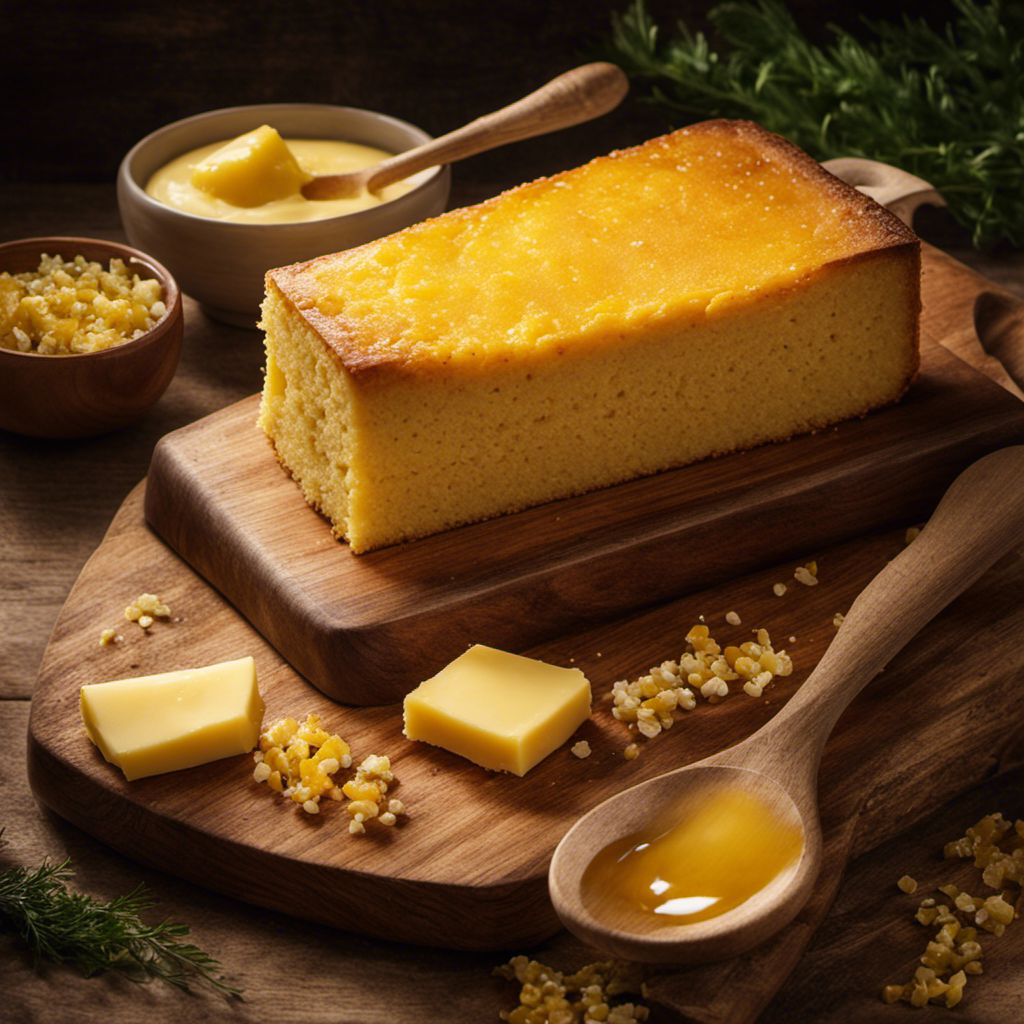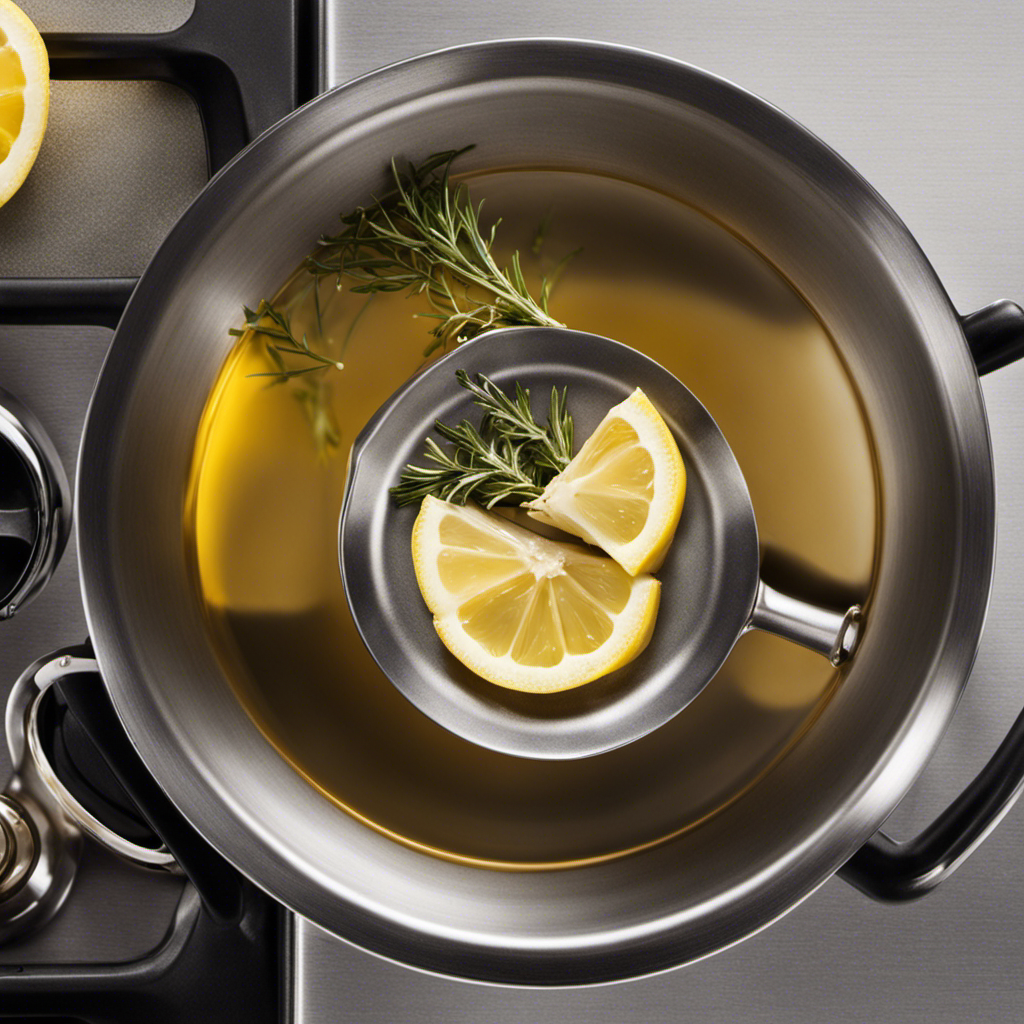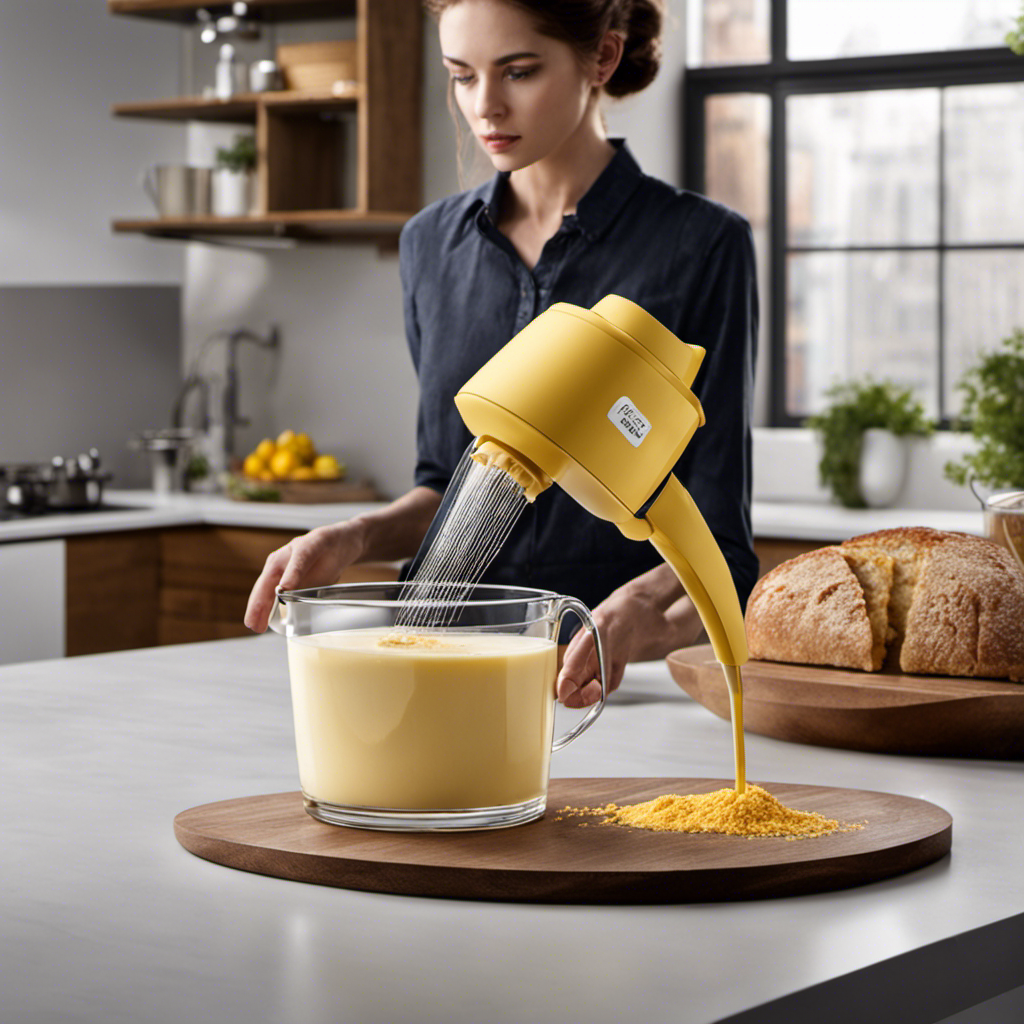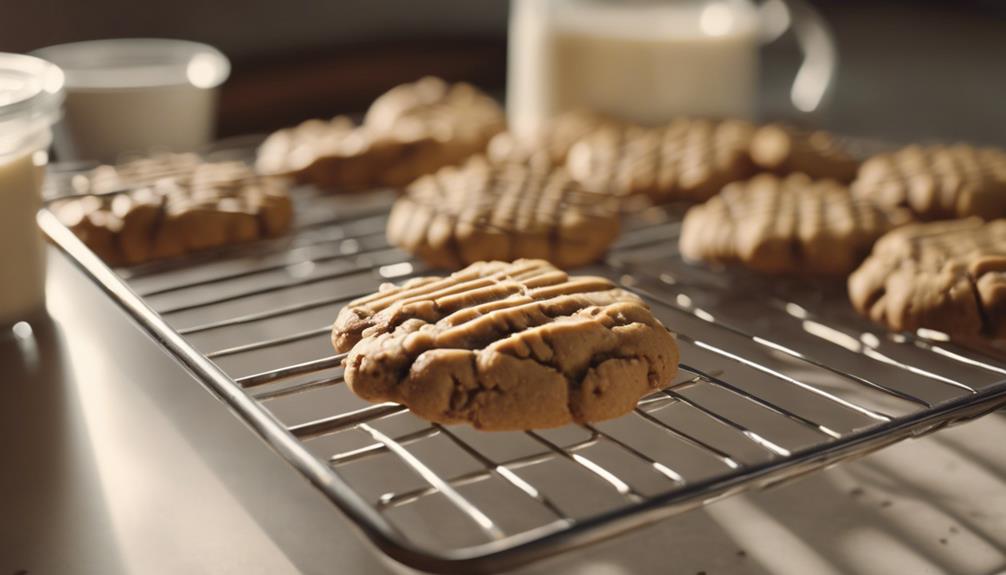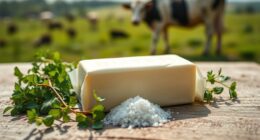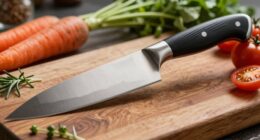I have always appreciated the luxurious, smooth consistency that a roux brings to dishes. However, when I wanted to make it without butter, I realized I needed to find a substitute.
After some experimenting, I discovered that there are plenty of options to create a delicious roux without butter.
In this article, I’ll share my favorite methods, along with tips and tricks for perfecting a butter-free roux.
Get ready to take your cooking to the next level with these alternative fat and flour combinations!
Key Takeaways
- Using alternative fats such as oil or margarine can be a healthier option with lower saturated fat content.
- Different alternative oils like vegetable oil, olive oil, or coconut oil can be used to make a roux without butter, each adding its own unique flavor profile.
- Choosing the right flour is important, and options include all-purpose flour, whole wheat flour, and gluten-free flour alternatives depending on personal preference and dietary needs.
- Perfecting a butterless roux requires practice and experimentation, including watching the roux closely to avoid burning and experimenting with spices and herbs for flavor variations.
The Importance of Roux in Cooking
Roux is crucial in cooking because it adds depth and richness to your dishes. It is the foundation of many sauces, soups, and gravies.
While there are alternative fats that can be used in roux, such as vegetable oil or bacon fat, the benefits of using butter cannot be overlooked. Butter not only adds flavor, but it also helps to create a smooth and creamy texture in the roux. The fat in butter helps to bind the flour particles together, resulting in a thickening agent that can enhance the taste and texture of your dishes.
Additionally, the milk solids in butter can add a subtle nutty flavor to the roux. So, while there are alternatives, using butter in your roux can truly elevate your cooking to the next level.
Alternative Fats for Making Roux
To create an alternative fat for your roux, you can use oil instead of butter. This not only provides a healthier option, but also opens up a world of flavors and health benefits. Here are four alternative oils for roux that you can try:
- Olive Oil: Known for its heart-healthy properties, olive oil adds a subtle fruity flavor to your roux.
- Coconut Oil: With its high smoke point, coconut oil is a great choice for high-heat cooking and imparts a hint of tropical sweetness.
- Avocado Oil: Rich in monounsaturated fats and vitamin E, avocado oil adds a creamy texture to your roux.
- Grapeseed Oil: Light and neutral in flavor, grapeseed oil is perfect for roux that won’t overpower the taste of your dish.
By using these alternative oils for roux, you not only reduce the saturated fat content, but also gain the health benefits associated with these oils.
Now, let’s move on to choosing the right flour for a butter-free roux.
Choosing the Right Flour for a Butter-Free Roux
When making a butter-free roux, it’s important to choose the right flour for the best results. The type of flour you use can greatly impact the texture and flavor of the final roux. There are several options to consider when selecting flour for a butter-free roux, including all-purpose flour, whole wheat flour, and gluten-free flour alternatives.
Let’s take a closer look at these different flour options and understand their impact on the final roux:
| Flour Type | Texture | Flavor |
|---|---|---|
| All-Purpose | Smooth | Neutral |
| Whole Wheat | Coarse | Nutty |
| Gluten-Free | Fine | Mild |
Choosing the right flour for your butter-free roux depends on your personal preference and dietary needs. All-purpose flour is a versatile option, while whole wheat flour adds a nutty flavor. Gluten-free flour alternatives are suitable for those with gluten sensitivities. Experiment with different flour types to find the perfect balance of texture and flavor for your roux.
Step-By-Step Instructions for Making a Roux Without Butter
When it comes to making a roux without butter, there are several alternatives that can be used.
One option is to substitute oil for the butter, such as vegetable oil or olive oil.
Another alternative is to use a non-dairy spread or margarine.
To ensure a successful substitution, it is important to choose an alternative that has a similar fat content and melting point as butter, and to follow the same cooking instructions for the roux.
Butter-Free Roux Alternatives
You can try using oil or margarine as an alternative to butter when making a roux without butter. Here are four benefits of using alternative fats in a roux:
-
Healthier Option: Oil and margarine are lower in saturated fat compared to butter, making them a healthier choice for those watching their cholesterol levels.
-
Dietary Restrictions: Using alternative fats allows individuals with lactose intolerance or dairy allergies to still enjoy dishes that require a roux.
-
Flavor Variations: Different oils and margarines can impart unique flavors to your roux, adding depth and complexity to your dishes.
-
Versatility: By using alternative fats, you open up the possibility of experimenting with different flavors and combinations, enhancing the overall culinary experience.
Tips for Successful Substitution
Using alternative fats such as oil or margarine can be a successful substitution for butter in your roux. When choosing an alternative fat, it’s important to consider its flavor and smoke point.
Oils like vegetable or canola are neutral in taste and have high smoke points, making them ideal for cooking techniques that require high temperatures. On the other hand, margarine can add a creamy flavor to your roux.
To create a butterless roux using oil or margarine, simply heat the fat in a saucepan over medium heat, then whisk in an equal amount of flour until smooth. Cook the roux, stirring constantly, until it reaches your desired color. This method allows you to achieve the same thickening power and richness as a traditional butter-based roux.
Transitioning into the subsequent section about ‘tips and tricks for perfecting a butterless roux’, it’s important to note that mastering the technique takes practice and experimentation.
Tips and Tricks for Perfecting a Butterless Roux
In my experience, I’ve found several alternatives to butter that can be used in a roux. Popular options include vegetable oil, olive oil, and even coconut oil. Each of these can lend a unique flavor to the dish.
The cooking time for a roux can vary depending on the desired color and thickness. It’s crucial to keep a close eye on the roux while cooking, as it can quickly go from golden to burnt if left unattended.
Lastly, experimenting with different flavor variations for a roux can elevate the taste of your dish. Adding spices like paprika or herbs like thyme can add depth and complexity to the roux, allowing you to customize it to your liking.
Butter Alternatives for Roux
There are several alternatives to butter that can be used when making a roux. As a knowledgeable chef who has experimented with various fats in roux, I can confidently share the benefits of using alternative fats. Here are four options to consider:
-
Olive oil: It adds a subtle fruity flavor and works well in lighter dishes like seafood or vegetable-based roux.
-
Vegetable oil: This neutral-tasting oil is a common choice, especially for those with dietary restrictions or allergies.
-
Coconut oil: Perfect for adding a hint of tropical flavor, it pairs nicely with dishes that have Asian or Caribbean influences.
-
Ghee: This clarified butter has a rich, nutty taste and adds a depth of flavor to your roux.
Using these butter-free alternatives not only caters to dietary preferences but also opens up a world of flavors to enhance your dishes.
Cooking Time for Roux
In addition to using different types of fats as alternatives to butter in roux, it’s important to consider the cooking time for the roux itself. The cooking time can greatly affect the flavor and thickness of the roux.
Cooking techniques for roux vary depending on the desired outcome. For a white or blond roux, which is used in dishes like béchamel sauce, the cooking time is relatively short. The flour and fat are cooked together just until the mixture turns a pale golden color.
On the other hand, for a darker roux, such as a Cajun roux, the cooking time is longer. The flour and fat are cooked together until they reach a deep, rich brown color. This longer cooking time enhances the flavor of the roux and gives it a nutty aroma.
Regardless of the cooking time, the flour and fat mixture should be stirred continuously to prevent burning and to ensure even cooking. This is an important step in achieving a smooth texture and consistent thickness in the roux.
In addition to cooking techniques, thickening agents can also be used to achieve the desired consistency in roux. Common thickening agents include cornstarch, arrowroot, and potato starch. These can be added to the roux at the beginning or towards the end of the cooking process, depending on the recipe.
Understanding the cooking time and experimenting with different thickening agents will help you master the art of making roux without butter.
Flavor Variations for Roux
To achieve different flavor variations in your roux, consider using alternative fats and experimenting with various spices and seasonings.
1) Coconut oil: Using coconut oil instead of butter in your roux can add a subtle tropical flavor to your dishes.
2) Olive oil: Olive oil brings a hint of Mediterranean flair to your roux, perfect for dishes like pasta sauces or Mediterranean stews.
3) Bacon fat: For a rich and smoky flavor, try using bacon fat in your roux. It adds depth and complexity to dishes like gumbo or jambalaya.
4) Spices and seasonings: Don’t be afraid to get creative with your spices and seasonings. Adding cayenne pepper, smoked paprika, or garlic powder can elevate the flavor profile of your roux.
By using alternative fats and experimenting with spices, you can create unique and delicious flavor variations in your roux.
Now, let’s explore some delicious recipes that use butter-free roux.
Delicious Recipes That Use Butter-Free Roux
You can find delicious recipes that use butter-free roux to create rich flavors in your dishes. Butter-free roux is a great alternative for those who are lactose intolerant or following a dairy-free diet. By using different fats or oils, you can achieve unique flavor variations in your roux-based dishes. Here are some delicious recipes that showcase the versatility of butter-free roux:
| Recipe | Fat/Oil Used | Flavor Variation |
|---|---|---|
| Cajun Gumbo | Vegetable oil | Spicy and robust |
| Mushroom Gravy | Olive oil | Earthy and savory |
| Chicken Pot Pie | Coconut oil | Creamy and tropical |
| Vegan Mac and Cheese | Cashew cream | Rich and nutty |
| Cauliflower Alfredo | Avocado oil | Creamy and light |
These recipes prove that butter-free roux can still deliver amazing flavors. Experiment with different fats and oils to discover your favorite flavor combination. Enjoy the deliciousness!
Frequently Asked Questions
Can I Use Oil Instead of Butter to Make a Roux?
Yes, you can use oil instead of butter to make a roux. Oil is a great alternative for those who are lactose intolerant or following a vegan diet. It also adds a different flavor profile to your dishes.
What Are Some Alternative Fats That Can Be Used to Make a Roux Without Butter?
Using vegetable shortening instead of butter or coconut oil can be a great alternative for making a roux without butter. Both options provide a similar fat base and can still achieve the desired texture and flavor in your recipes.
How Do I Choose the Right Flour for Making a Butter-Free Roux?
Choosing the right flour for a butter-free roux is essential to achieve a smooth and thick sauce. To thicken sauces without using butter, I recommend opting for a high-protein flour like bread flour or even chickpea flour.
Can You Provide Step-By-Step Instructions for Making a Roux Without Butter?
Sure, I can provide step-by-step instructions for making a roux without butter. The key is to use alternative fats like oil. There are some differences between butter and oil in roux making, but it can still turn out delicious.
What Are Some Tips and Tricks for Perfecting a Butterless Roux?
To achieve a rich flavor in a butterless roux, try using alternative fats like olive oil or coconut oil. Additionally, incorporating flavorful ingredients like onions, garlic, and spices can enhance the taste.
Conclusion
In conclusion, I must say that making a roux without butter has truly opened my eyes to a whole new world of culinary possibilities. Who knew that alternative fats like olive oil or coconut oil could create such a rich and velvety base for sauces and soups?
The right flour, whether it be all-purpose or gluten-free, can make all the difference in achieving that perfect consistency.
So, fear not my friends, for a butterless roux is not only possible, but it might just be the secret ingredient that takes your dishes to the next level.
Bon appétit!

